13.10.2021

The new heart of ESA’s Planetary Defence Office was inaugurated today, heralding a new chapter in the Agency’s work to protect Earth from dangerous near-Earth objects, aka asteroids.
For years, ESA has been dedicated to opening our eyes to hazards in space, and when it came to asteroids this meant ensuring Europe had the capability to detect, track and understand what’s out there.
In 2019, ESA adopted a renewed ’Space Safety’ programme, and ESA’s Planetary Defenders are not only building new, state-of-the-art telescopic eyes on the sky but are working with the international community to devise, build and fly missions to help test asteroid deflection for the first time.
With the greater responsibility, comes the need for expanded coordination facilities serving as the central hub for the Agency’s asteroid data and analysis efforts.
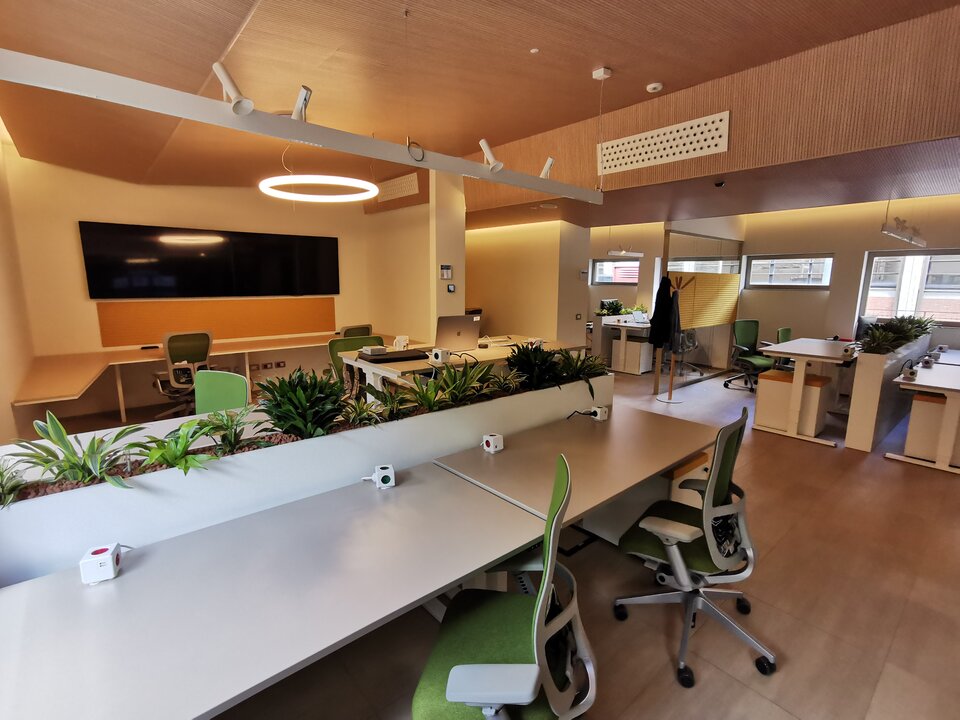
“Our new NEOCC and its activities are an important tool of international cooperation, reflecting the global character of the dangers we all face due to asteroids,” says ESA Director General Josef Aschbacher.
“ESA’s Planetary Defence Office is in regular close contact with all major organisations monitoring asteroid risk, from NASA’s Planetary Defense Coordination Office and their Center for NEO studies, to the UN-endorsed committees that help coordinate the global effort.
"The Planetary Defence Office is also performing technical management of the recently initiated activities on space safety within the European Union. Our activities are part of a worldwide community effort, and the NEOCC shows that Europe and ESA in particular can bring something substantial and indispensable to the table.”
A new home for ESA’s asteroid ‘sorting hat’
What was once a modest office at ESA’s ESRIN establishment, in Frascati, Italy, has been renovated into a much more capable facility to serve as ESA’s Near-Earth Object Coordination Centre, NEOCC.
The new site will also serve as the main data hub for daily observation data from ESA’s future Flyeye telescopes, the first of which is now being assembled and integrated at a factory in Milan.
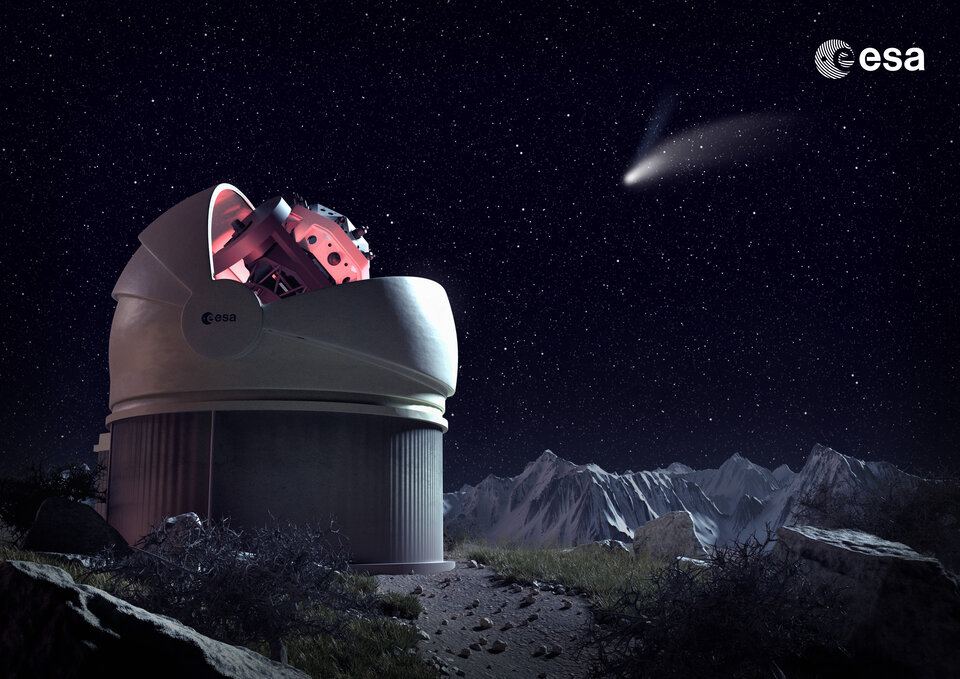
“The NEOCC is central to ESA’s Planetary Defence Office. Think of it a little like Europe’s asteroid ‘sorting hat’,” explains Detlef Koschny, acting Head of ESA’s Planetary Defence Office.
“A key activity of the office, for example, is compiling the Asteroid Risk List. The NEOCC ranks any asteroid with a greater-than-zero chance of impacting Earth, then pools all available observations – getting more if necessary – until we know each object’s precise orbit.”
Luca Conversi, Manager of the NEOCC, expands, “Asteroid observations and data come in from across the globe, and every day the Coordination Centre team use this to determine the orbit and impact risk from ancient cosmic bodies.”
“As is nearly always the case, the more we understand an object’s path, the more certain we are that it won’t strike Earth. But we are preparing for the day this isn’t the case.”

The Centre is in fact the central access point to an entire network of European data sources and information providers, as well as the provider of vital asteroid orbital information, impact monitoring, risk analyses and more.
Contributing to and coordinating observations of asteroids and comets in the Solar System, the NEOCC also evaluates and monitors the threat posed by any space rocks that come near Earth, proposing mitigation measures if needed, for example to emergency response agencies in case of an imminent impact.
ESA’s Planetary Defence Office currently consists of 15 people, half of whom work at the NEOCC, and the remainder at other ESA establishments including ESTEC in the Netherlands, ESOC in Germany and ESACin Spain.
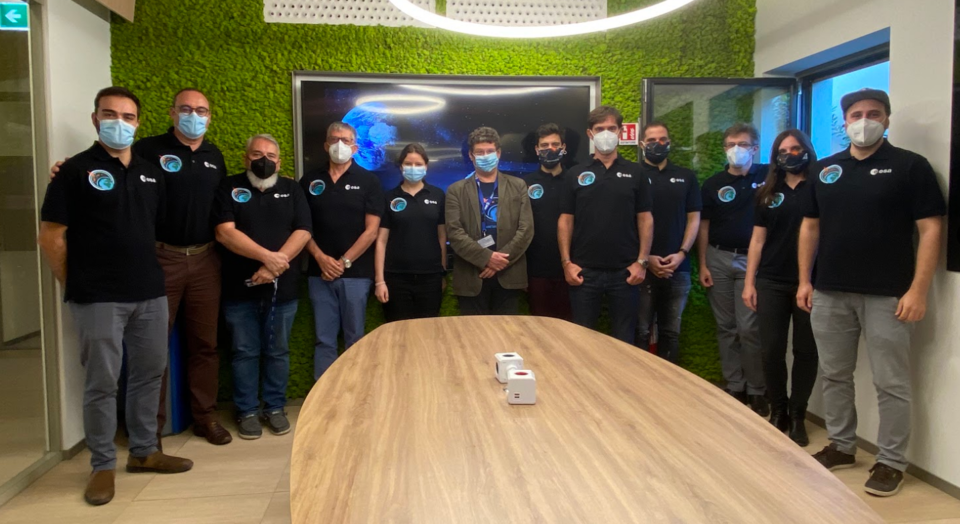
“With the inauguration of a NEO Coordination Centre in ESRIN, an important milestone has been achieved,” says Giorgio Saccoccia, President of the Italian Space Agency (ASI).
“Planetary Defence is a priority for Italy, as witnessed also by the participation to the first asteroid deflection experiment through the DART, LICIACube and Hera missions. Our Country supports since the very beginning the ESA programmes devoted to space safety as an opportunity to give value to the worldwide expertise of the Italian scientific community working on the asteroid hazard.
“Over the years, ESA has successfully advanced the key areas of impact monitoring, asteroid tracking, and discovery observations, thanks to the impressive work of a team of highly skilled experts. They deserve the beautiful state-of the art logistic environment being inaugurated today at ESRIN: it is a clear sign that we are on the right track in the path of taking care of our planet and its citizens.”
Leading Europe’s response, collaborating with the world
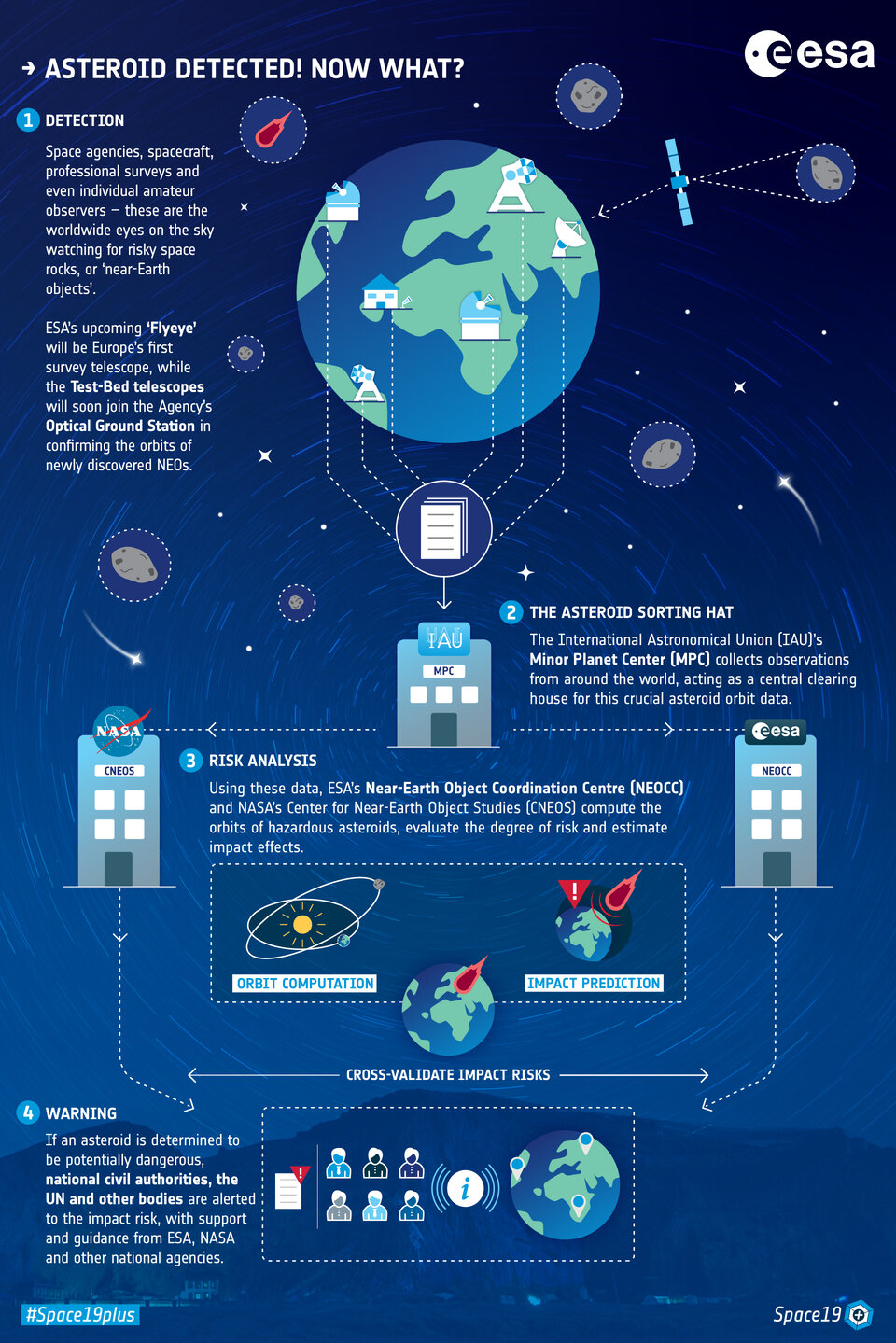
As the Planetary Defence Office leads Europe’s response to the asteroid threat, it works side-by-side with the international community, and in particular collaborates closely with NASA’s Planetary Defense Coordination Office, while the NEOCC works closely with CNEOS, the Center for NEO Studies at NASA/JPL in California.
In addition, ESA is a member of two UN-endorsed organisations: the International Asteroid Warning Network (IAWN), which is currently coordinated by NASA; and the Space Mission Planning Advisory Group (SMPAG), chaired by ESA. SMPAG is the group in charge of preparing an international space-based response to any future asteroid threat.
ESA also works closely with the USA-based Minor Planet Center, the international clearing house for high-quality data on near-Earth objects, and the Agency also performs technical management for some of the recently initiated space safety activities within the European Union.
Last but not least, ESA has an agreement with the European Southern Observatory to use their Very Large Telescope for vital asteroid follow-up observations.
How worried should we really be?
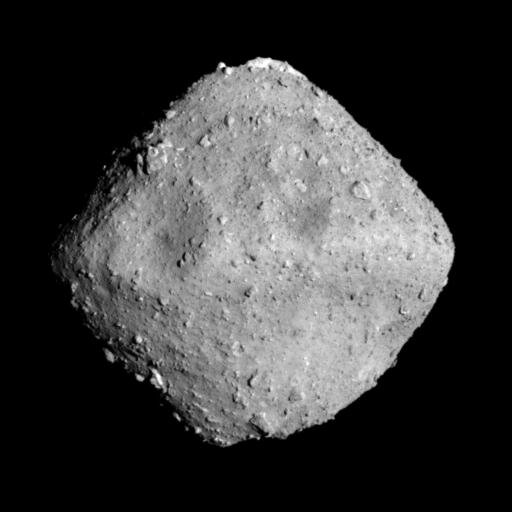
Large, extinction-level impacts are extremely rare. And while they can do great damage, an asteroid impact is the only natural disaster we can, in principle, prevent – but to do this, we need time. Deflection and mitigation missions are possible, but they take years to become reality and to fly out to meet a target asteroid.
More frequent are Earth impacts come from medium-sized asteroids, of which there are many more scattered throughout the Solar System. For these objects, early warning is also vital. While asteroids of this size don’t always reach the ground, they can create large airbursts on entry into the atmosphere, which can do damage to buildings and infrastructure in the local area, even causing injury, for example, from suddenly broken windows.
In both cases, ESA is at the forefront, detecting risky objects, understanding their path, and working on solutions to keep us safe.
Quelle: ESA
